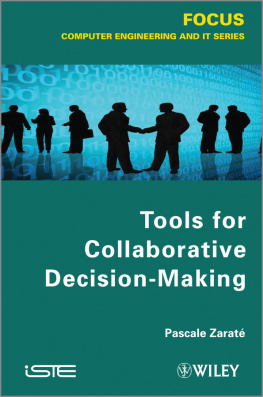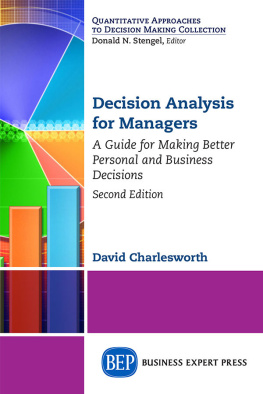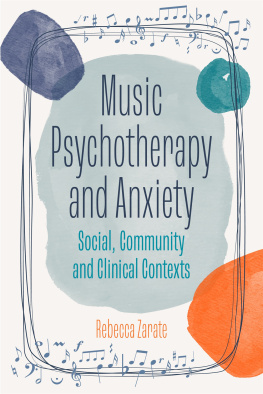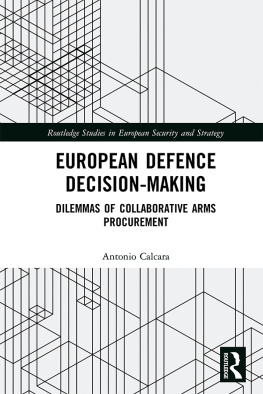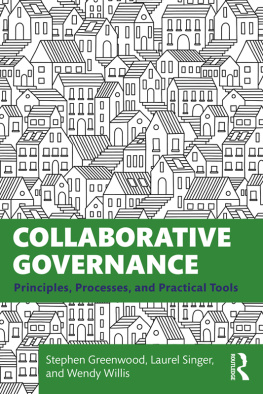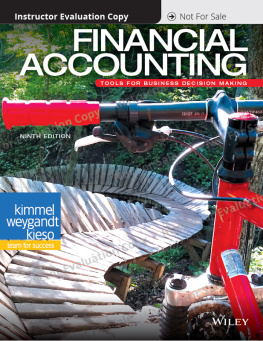Zaraté - Tools for Collaborative Decision-Making
Here you can read online Zaraté - Tools for Collaborative Decision-Making full text of the book (entire story) in english for free. Download pdf and epub, get meaning, cover and reviews about this ebook. City: London;Hoboken;N.J, year: 2013, publisher: John Wiley & Sons, Incorporated;ISTE Ltd, genre: Home and family. Description of the work, (preface) as well as reviews are available. Best literature library LitArk.com created for fans of good reading and offers a wide selection of genres:
Romance novel
Science fiction
Adventure
Detective
Science
History
Home and family
Prose
Art
Politics
Computer
Non-fiction
Religion
Business
Children
Humor
Choose a favorite category and find really read worthwhile books. Enjoy immersion in the world of imagination, feel the emotions of the characters or learn something new for yourself, make an fascinating discovery.
- Book:Tools for Collaborative Decision-Making
- Author:
- Publisher:John Wiley & Sons, Incorporated;ISTE Ltd
- Genre:
- Year:2013
- City:London;Hoboken;N.J
- Rating:4 / 5
- Favourites:Add to favourites
- Your mark:
- 80
- 1
- 2
- 3
- 4
- 5
Tools for Collaborative Decision-Making: summary, description and annotation
We offer to read an annotation, description, summary or preface (depends on what the author of the book "Tools for Collaborative Decision-Making" wrote himself). If you haven't found the necessary information about the book — write in the comments, we will try to find it.
Zaraté: author's other books
Who wrote Tools for Collaborative Decision-Making? Find out the surname, the name of the author of the book and a list of all author's works by series.
Tools for Collaborative Decision-Making — read online for free the complete book (whole text) full work
Below is the text of the book, divided by pages. System saving the place of the last page read, allows you to conveniently read the book "Tools for Collaborative Decision-Making" online for free, without having to search again every time where you left off. Put a bookmark, and you can go to the page where you finished reading at any time.
Font size:
Interval:
Bookmark:


First published 2013 in Great Britain and the United States by ISTE Ltd and John Wiley & Sons, Inc.
Apart from any fair dealing for the purposes of research or private study, or criticism or review, as permitted under the Copyright, Designs and Patents Act 1988, this publication may only be reproduced, stored or transmitted, in any form or by any means, with the prior permission in writing of the publishers, or in the case of reprographic reproduction in accordance with the terms and licenses issued by the CLA. Enquiries concerning reproduction outside these terms should be sent to the publishers at the undermentioned address:
ISTE Ltd
27-37 St Georges Road
London SW19 4EU
UK
www.iste.co.uk
John Wiley & Sons, Inc.
111 River Street
Hoboken, NJ 07030
USA
www.wiley.com
ISTE Ltd 2013
The rights of Pascale Zarat to be identified as the author of this work have been asserted by her in accordance with the Copyright, Designs and Patents Act 1988.
Library of Congress Control Number: 2012949420
British Library Cataloguing-in-Publication Data
A CIP record for this book is available from the British Library
ISSN: 2051-2481 (Print)
ISSN: 2051-249X (Online)
ISBN: 978-1-84821-516-0

Printed and bound in Great Britain by CPI Group (UK) Ltd., Croydon, Surrey CR0 4YY
Figures
Courbons decision-making process
DTL (decision time line)
Cauvins decisional process
The progression of Simons phases of decision-making [SIM 77] revisited
Model of collaborative design
Model of the process of collaborative design
Generic model of the process of collaborative decision-making
Architecture of DSSs put forward by [SPR 82]
Architecture of DSSs according to [MAR 03]
Conceptual architecture for I-DMSSs put forward by [FOR 02]
Elementary architecture for a cooperative knowledge-based system put forward by [SOU 96]
Architecture of CDSSs
Knowledge capitalization: a process-oriented model
Tables
Table showing the characteristics of the experiments
Table of the different situations for collective decision-making
Decision support uses techniques and methods drawn from applied mathematics such as optimization, statistics and decision theory and theories from less formal domains such as organizational analysis and cognitive sciences.
While their work has had less of a normative impact than has decision theory, Roy and Bouyssou [ROY 93] view decision support as a science based on three main postulates:
Roy and Bouyssou hold that peoples ability to abstractly represent phenomena and their capacity for hypothetical-deductive reasoning can be and are used in the service of action: the person reflects before intervening, constructing a scenario in his/her head before acting.
Such deduction and modeling, when consciously exercised with a view to enlightening a persons behavior during a decision-making process, is the very essence of decision support.
Roy and Bouyssou define decision support as the activity of someone (a researcher) who, using clearly expressed and reasonably well formalized models, seeks to partially answer the questions which an actor (decision-maker) asks him/herself during the decision-making process. These partial answers, when combined, help illuminate the decision, and normally suggest a certain course of action to help ensure the process is more compatible with the actors goals and guiding values system.
Furthermore, they stress that decision support helps participants in the decision-making process to be constructive, sit down together and share their various convictions. It ensures that there is room for critical discussion to take place, regarding the basis for the decision and how it is taken.
According to Tsoukias [TSO 08], there are a number of approaches to decision support: normative, descriptive, prescriptive and constructive. Regardless of which approach is taken, he considers decision support to be a process involving:
He views decision support as a distributed cognitive process. He also puts forward a set of artifacts generated by the decision support process.
In order to provide decision support as effectively as possible, we must develop software tools.
Numerous systems have been created with the aim of providing the best possible decision support, while fitting into decision support frameworks as fully as possible. These systems are not always used to their full extent. In large organizations, spreadsheet applications are still very widely used for operational level decisions and tactical management decisions.
However, the introduction of information and communication technology (ICT) has considerably altered the process of decisionmaking in organizations. This is our working hypothesis, to which Chapter 1 is devoted.
Based on this working hypothesis, in Chapter 2, we present our investigation of this new context of decision-making. The change in the process is related to the switch from a context where there is a single decision-maker to one where there are multiple decision-makers, operating separately and independently, where the various decision-makers need to cooperate.
It is useful to define exactly what it is that we mean by cooperation. This concept is analyzed in Chapter 3.
Chapter 4 defines and discusses a newly-emerging concept: cooperative decision-making. We present a generic model of this concept.
In order to provide decision support for use in these new cooperative processes, we must develop new tools.
We begin Chapter 5 by defining systems to support decisionmaking in a fairly general sense. Several types of systems will be described: decision support systems (DSSs), intelligent DSSs (IDSSs), cooperative knowledge-based systems, cooperative systems, group decision support systems, business intelligence, collaborative engineering, workflows and cooperative multi-agent systems. We also show in this chapter how the work of certain key users such as facilitators can be supported, and how an approach of collaborative design of all these systems can be drawn up.
Next pageFont size:
Interval:
Bookmark:
Similar books «Tools for Collaborative Decision-Making»
Look at similar books to Tools for Collaborative Decision-Making. We have selected literature similar in name and meaning in the hope of providing readers with more options to find new, interesting, not yet read works.
Discussion, reviews of the book Tools for Collaborative Decision-Making and just readers' own opinions. Leave your comments, write what you think about the work, its meaning or the main characters. Specify what exactly you liked and what you didn't like, and why you think so.

